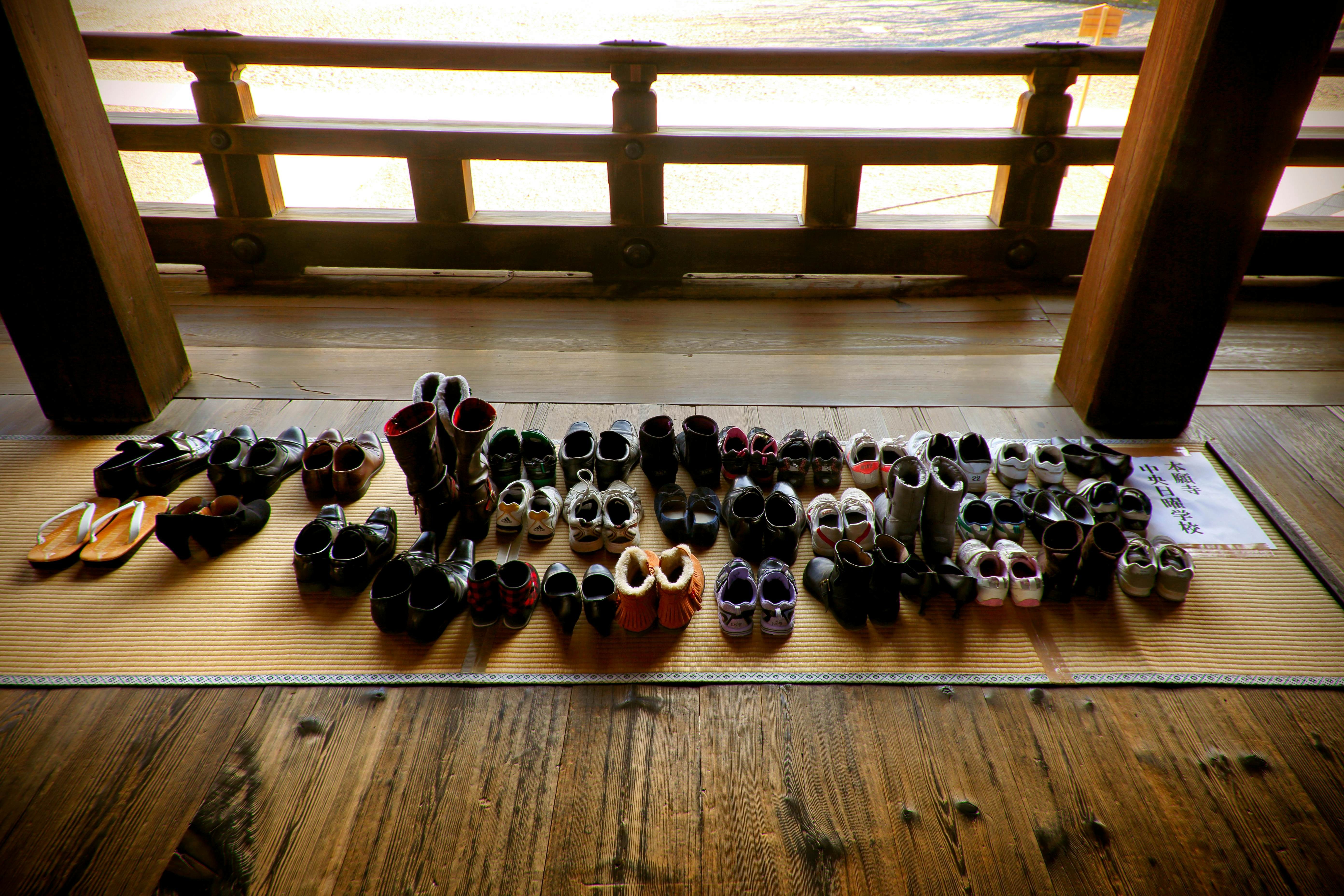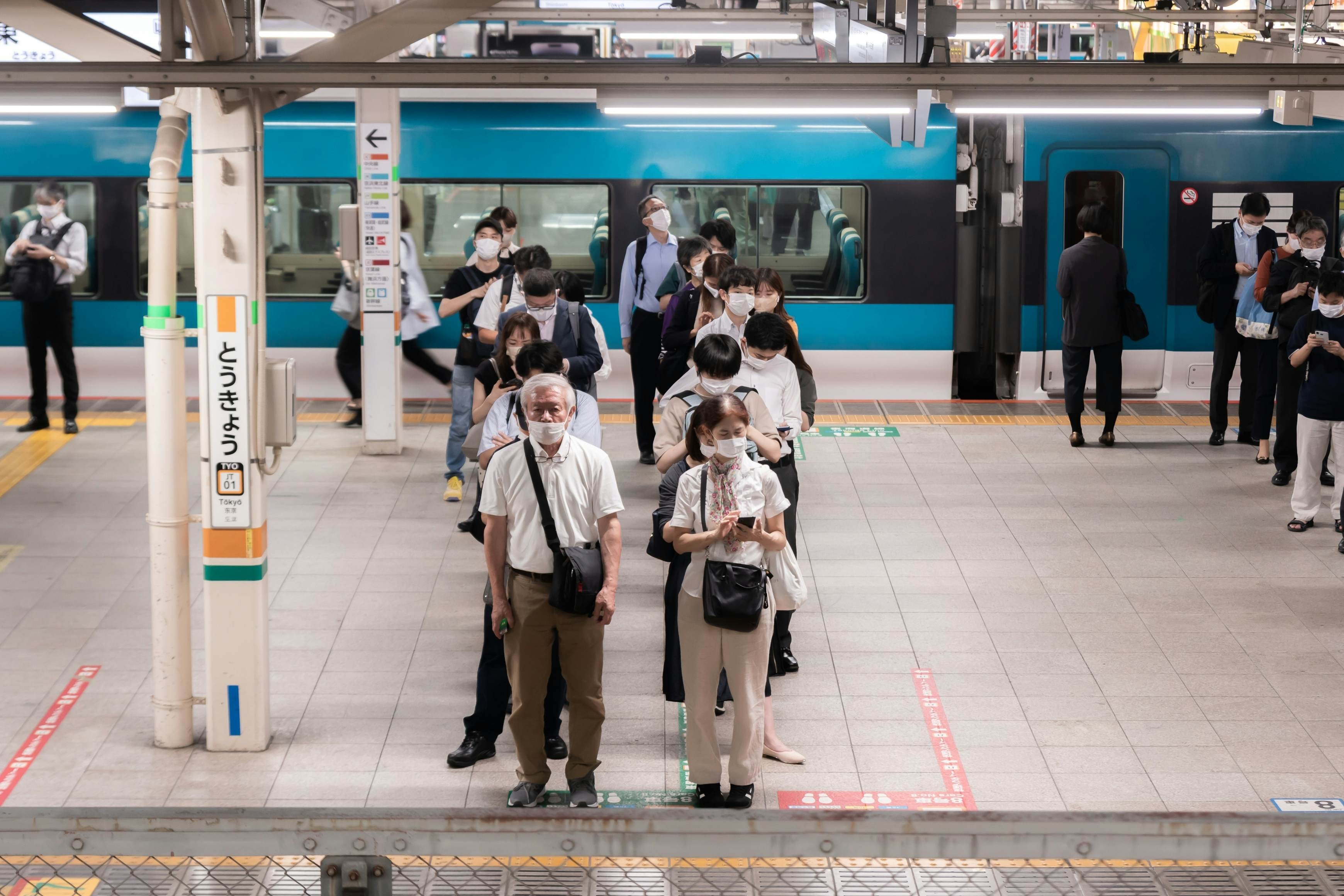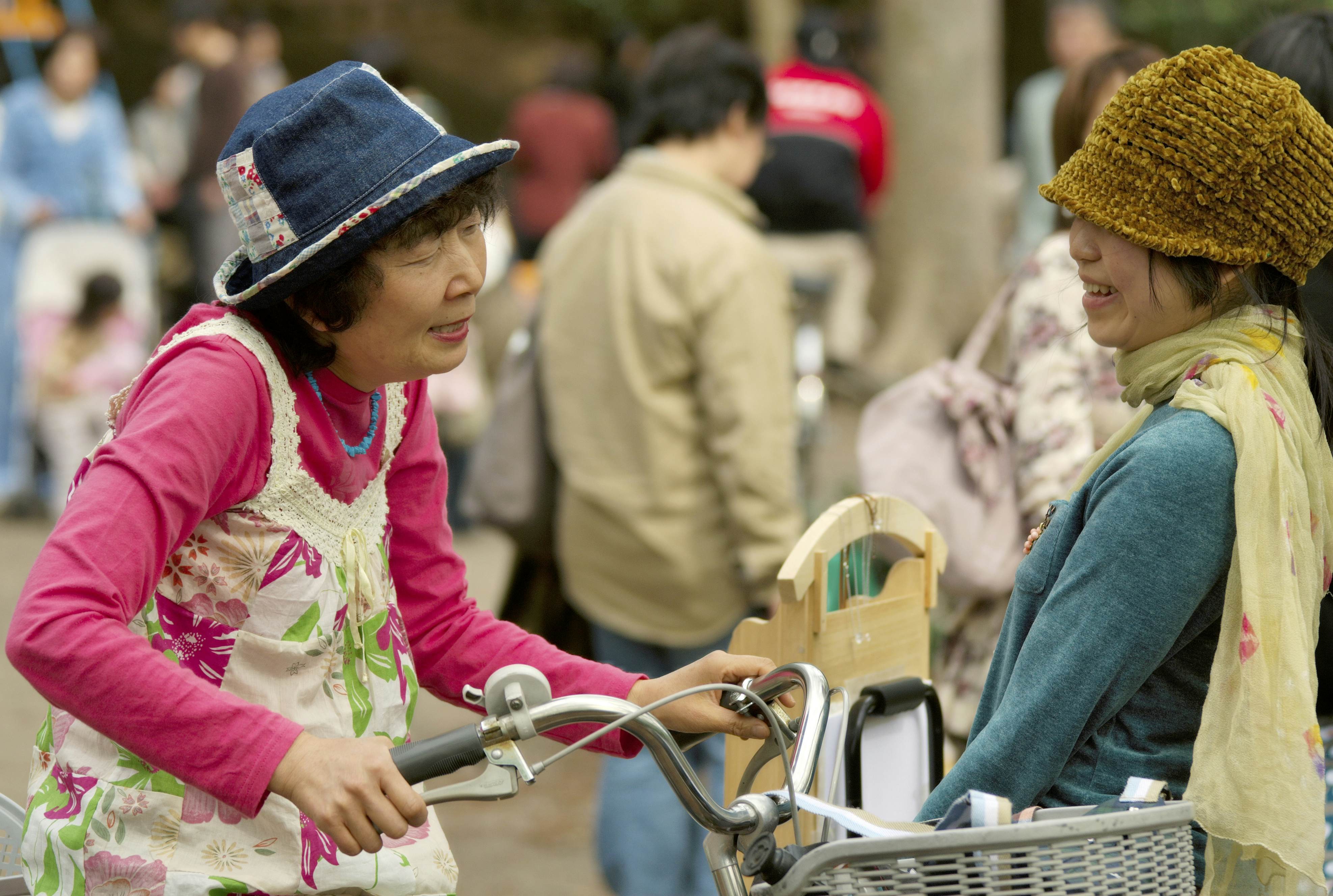Navigating Japan can feel daunting, but with the right knowledge, your trip will be unforgettable. SIXT.VN offers expert travel advice and services to ensure a seamless experience in Japan. From transportation to accommodation, knowing the essentials can transform your journey into an enjoyable adventure. Let’s explore the key aspects of traveling to Japan, ensuring you’re well-prepared and ready to embrace this incredible destination with helpful travel tips and cultural insights.
1. Pre-Trip Preparations: Booking and Planning
Planning your trip to Japan starts well before you pack your bags. Advance booking, especially for accommodations, is crucial to secure the best options. Understanding peak travel seasons and cultural norms will also enhance your travel experience.
1.1. Booking Accommodation in Advance
Answer: Absolutely, booking accommodations well in advance is essential, particularly during peak seasons.
Top accommodations in Japan often get fully booked weeks or even months in advance. Popular travel periods include the first week of January, cherry blossom season (late March through April), Golden Week (April 29 to May 5), and August. Planning ensures you secure your preferred lodging and avoid last-minute stress. Smaller inns or ryokan often have fixed check-in times, so coordinating your arrival is crucial.
According to Booking.com, travelers who book accommodations at least three months in advance often find better deals and availability. This is especially important during peak travel times when popular hotels and ryokan sell out quickly. Planning ahead not only guarantees a place to stay but also allows you to explore various options and choose the best fit for your needs and budget.
1.2. Packing Light and Smart
Answer: Yes, packing light and choosing the right attire is vital for a comfortable trip.
Hotel rooms in Japan, especially in cities, tend to be small, offering limited space for large suitcases. Navigating public transport with oversized luggage can be challenging. Some shinkansen require advance reservations for oversized baggage, with penalties for non-compliance. Comfortable walking shoes are essential, and easy slip-on shoes are convenient for visiting religious sites and traditional inns. Consider bringing socks, as you’ll often use shared slippers. While religious sites don’t typically have strict dress codes, high-end establishments may require appropriate attire (no sleeveless shirts or sandals for men).
 Dozens of shoes neatly arranged on a wooden floor, ready for visitors to slip into.
Dozens of shoes neatly arranged on a wooden floor, ready for visitors to slip into.
Packing light is always beneficial, but it’s especially advisable for Japan due to limited space and the need for easy mobility. According to a survey by the Japan National Tourism Organization (JNTO), foreign visitors often find smaller accommodations in cities, making it essential to pack efficiently. Opt for versatile clothing items that can be mixed and matched, reducing the overall volume of your luggage.
1.3. Connectivity: SIM Card or eSIM
Answer: Definitely, staying connected is important, and a data-heavy SIM card or eSIM is highly recommended.
Finding your way around Japan can be challenging, especially with the complex street-address system. Smartphones with navigation apps are invaluable tools. To avoid high roaming charges, buying a data-loaded SIM card or using an eSIM upon arrival is wise. You can purchase a SIM card at the airport or various shops, or opt for the convenience of an eSIM if your phone supports it.
According to a study by the Ministry of Internal Affairs and Communications, over 90% of foreign tourists in Japan use smartphones for navigation and information gathering. Having reliable internet access is essential for using maps, translation apps, and staying connected with loved ones. A data-heavy SIM card or eSIM ensures you have the necessary connectivity without incurring exorbitant roaming fees.
1.4. Weather Preparedness
Answer: Absolutely, being prepared for Japan’s varied weather conditions is essential for a comfortable trip.
Summers in Japan are hot and humid, increasing the risk of heatstroke. Always carry water during the warmer months. A folding umbrella with UV protection is useful for both rain and sun. The rainy season starts in late June and can last for weeks. Typhoon season, from September through October, can cause significant travel disruptions. Winters can be chilly, with heavy snowfall in Tōhoku and Hokkaidō. Convenience stores offer weather-related necessities like umbrellas, hats, and pocket warmers.
According to the Japan Meteorological Agency, it’s important to monitor weather warnings, especially during typhoon season, to avoid travel disruptions and ensure safety. Being prepared for the weather ensures that you can enjoy your trip regardless of the conditions. Packing layers, carrying rain gear, and staying informed about potential weather hazards are all part of responsible travel in Japan.
2. Mastering Japanese Customs and Etiquette
Understanding and respecting Japanese customs and etiquette can greatly enhance your travel experience, ensuring you navigate social situations smoothly and respectfully.
2.1. Cash Usage and Tipping
Answer: Yes, carry cash, but don’t worry about tipping.
While credit cards are becoming more widely accepted, many rural areas and older family-run businesses still prefer cash. Always carry enough cash, especially when visiting country ryokan and smaller establishments. Major convenience store chains have ATMs that accept international cards. When paying, place your cash or card in the small tray rather than handing it directly to the cashier. Tipping is not customary in Japan and may cause embarrassment. Instead, some establishments may charge a service fee or offer a small appetizer called otoshi for a small fee.
According to a survey by the Bank of Japan, while cashless payments are increasing, cash remains the dominant form of transaction, especially in smaller towns and rural areas. Carrying cash ensures you can make purchases without issues and adhere to local customs. Tipping is generally not expected, and attempting to tip may be seen as impolite. Instead, focus on expressing your gratitude through polite words and gestures.
2.2. Public Behavior: Eating and Trash Disposal
Answer: You’re right, avoid eating in public and manage your trash responsibly.
Eating in public, especially while walking, is generally frowned upon. Exceptions include eating bentō on shinkansen and at festivals or market streets. Taking sips from a resealable beverage container is acceptable. Public garbage cans are scarce, reflecting a culture of respect for public spaces. Carry your trash with you until you can dispose of it at your accommodation or the point of purchase.
 People on a train platform, patiently waiting in an orderly queue, showcasing Japanese efficiency.
People on a train platform, patiently waiting in an orderly queue, showcasing Japanese efficiency.
The Ministry of the Environment emphasizes the importance of responsible waste management in Japan. Due to the scarcity of public garbage cans, it’s customary to carry your trash until you can properly dispose of it. Refraining from eating in public respects local customs and helps maintain cleanliness. By adhering to these practices, you contribute to the preservation of Japan’s beautiful public spaces.
2.3. Queueing and Escalator Etiquette
Answer: Absolutely, understanding queueing and escalator etiquette is important for smooth navigation.
The Japanese are known for their orderly queues, forming neat lines at checkout counters and train platforms. After train doors open, securing a seat is more competitive. On escalators, stand to one side, with Kanto and points eastward standing to the left, and Kansai and points westward standing to the right. Train operators encourage passengers to stand on both sides and avoid walking on escalators.
According to research by the Japan Transport Planning Association, orderly queueing and escalator etiquette contribute to the smooth and efficient operation of public transport. Adhering to these customs helps prevent congestion and ensures a pleasant experience for everyone. Following the established norms demonstrates respect for local culture and facilitates harmonious interaction with fellow travelers.
3. Navigating Public Transportation
Japan’s public transportation system is efficient but can be overwhelming. Knowing the basics about trains, subways, and buses will help you navigate like a pro.
3.1. Train Schedules and Rush Hour
Answer: Indeed, be aware of train schedules and try to avoid the morning commute.
City subways typically run until 1 AM. Missing the last train means relying on expensive taxis. In Tokyo, the morning commute from 7:30 AM to 9 AM is extremely crowded. Shinjuku Station, the world’s busiest, sees over 3.5 million commuters daily. Try to avoid traveling during peak hours if possible.
The Tokyo Metropolitan Government Bureau of Transportation advises that traveling outside of peak hours can significantly reduce commute stress. Understanding train schedules and planning your travel accordingly will help you avoid crowded conditions and ensure a more comfortable journey. Utilizing tools like Google Maps or Japan Transit Planner can assist you in finding the best routes and times to travel.
3.2. Bidet Toilets and Other Customs
Answer: You’re correct, embrace the bidet toilet and be aware of other toilet customs.
Japan’s high-tech bidet toilets, called “washlets,” offer washing and drying features with the touch of a button. Motion-sensor-activated sound machines provide privacy. Expect dedicated toilet slippers in shoes-off establishments. Towels and hand dryers are often lacking, so carry a small cloth.
According to a survey by the Japan Sanitary Equipment Industry Association, over 80% of Japanese households have washlet-style toilets. Embracing this technology is part of the Japanese cultural experience. Additionally, being aware of other toilet customs, such as the use of slippers and the lack of hand-drying facilities, will ensure you are prepared and respectful of local practices.
4. Safety and Emergency Preparedness
Japan is generally a safe country, but it’s essential to be prepared for natural disasters like earthquakes and tsunamis.
4.1. Earthquake and Tsunami Awareness
Answer: Yes, know what to do in case of an earthquake or tsunami.
Japan is seismically active, and while strong earthquakes are rare, minor tremors are common. During an earthquake, stay calm and follow the lead of those around you. Take cover under a table or in a doorway. Tsunamis can follow significant quakes, so listen for warnings and move to higher ground if near the coast.
 Two women chatting on a peaceful street, capturing the essence of local interaction in Japan.
Two women chatting on a peaceful street, capturing the essence of local interaction in Japan.
The Japan Meteorological Agency provides comprehensive information on earthquake and tsunami preparedness. Knowing what to do in the event of a natural disaster can significantly increase your safety. Familiarize yourself with evacuation routes and emergency procedures, and stay informed about potential risks in the areas you plan to visit.
5. Essential Japanese Phrases
Learning a few basic Japanese phrases will enhance your interactions with locals and show respect for their culture.
5.1. Useful Phrases for Dining and More
Answer: Yes, learning a few Japanese phrases will greatly enhance your experience.
Some useful phrases include:
- ōmori (large portion, often free at ramen stalls)
- okawari (refill)
- mochikaeri (takeaway)
- tennai de (eat-in)
- onegai shimasu (please)
- sumimasen (excuse me)
- arigatō gozaimasu (thank you)
- toire (toilet)
According to a study by the Japan Tourism Agency, tourists who use basic Japanese phrases report a more positive and engaging travel experience. Simple phrases like “arigatō gozaimasu” and “sumimasen” can go a long way in showing respect and facilitating communication. Locals appreciate the effort to speak their language, even if it’s just a few words.
6. Understanding the Nuances of Japanese Culture
To truly appreciate Japan, it’s helpful to understand some of the cultural nuances that may not be immediately obvious to visitors.
6.1. Gift-Giving Etiquette
When giving a gift, present it with both hands and a slight bow. Avoid giving gifts in sets of four, as this number is considered unlucky. If you receive a gift, don’t open it immediately unless encouraged to do so.
6.2. Business Card Exchange
In business settings, exchanging business cards is a formal ritual. Present your card with both hands, ensuring the text is facing the recipient. Receive the card with both hands, examine it briefly, and acknowledge the person’s name and title.
6.3. Bathing Etiquette
When using public baths or onsen, thoroughly wash and rinse yourself before entering the bath. Avoid wearing swimsuits, as these are generally not permitted. Relax and enjoy the therapeutic benefits of the hot springs.
7. Exploring Japan’s Diverse Regions
Japan offers a wide array of destinations, each with its unique charm and attractions.
7.1. Tokyo: The Modern Metropolis
Tokyo is a vibrant city that seamlessly blends traditional culture with modern technology. Visit iconic landmarks like the Tokyo Skytree, Sensō-ji Temple, and the bustling Shibuya Crossing.
7.2. Kyoto: The Cultural Heart
Kyoto is renowned for its historical temples, serene gardens, and traditional geisha districts. Explore sites like Kinkaku-ji (Golden Pavilion), Fushimi Inari Shrine, and the picturesque Arashiyama Bamboo Grove.
7.3. Osaka: The Culinary Capital
Osaka is a food lover’s paradise, known for its delicious street food, vibrant nightlife, and friendly locals. Sample local specialties like takoyaki, okonomiyaki, and kushikatsu.
7.4. Hiroshima: A Symbol of Peace
Hiroshima is a city that has risen from the ashes of the atomic bombing to become a symbol of peace and resilience. Visit the Hiroshima Peace Memorial Park and Museum to learn about the city’s history and promote global peace.
7.5. Hokkaido: Nature’s Playground
Hokkaido is Japan’s northernmost island, known for its stunning natural beauty, including snow-capped mountains, pristine lakes, and abundant wildlife. Enjoy outdoor activities like skiing, hiking, and hot spring bathing.
8. Traveling with SIXT.VN: Enhancing Your Japanese Adventure
SIXT.VN offers a range of services to make your trip to Japan seamless and enjoyable.
8.1. Expert Travel Advice
SIXT.VN provides expert travel advice tailored to your interests and preferences. Whether you’re interested in cultural experiences, culinary adventures, or outdoor activities, our team can help you create the perfect itinerary.
8.2. Airport Transfers
SIXT.VN offers convenient and reliable airport transfer services to ensure a smooth arrival and departure. Our professional drivers will greet you at the airport and transport you to your hotel in comfort.
8.3. Hotel Booking
SIXT.VN offers a wide selection of hotels to suit every budget and preference. From luxury hotels to traditional ryokan, we can help you find the perfect accommodation for your trip.
8.4. Tour Packages
SIXT.VN offers a variety of tour packages that showcase the best of Japan. Whether you’re interested in exploring Tokyo, Kyoto, or other regions, our tour packages provide a convenient and hassle-free way to experience the country.
8.5. Car Rental
SIXT.VN offers car rental services, allowing you to explore Japan at your own pace. With a wide range of vehicles to choose from, you can find the perfect car for your needs.
9. Cultural Immersion Activities
To truly experience Japan, consider participating in cultural immersion activities.
9.1. Tea Ceremony
Participate in a traditional tea ceremony to learn about the art of preparing and serving matcha, a powdered green tea.
9.2. Calligraphy Workshop
Take a calligraphy workshop to learn the art of Japanese writing and create your own beautiful artwork.
9.3. Cooking Class
Join a cooking class to learn how to prepare traditional Japanese dishes like sushi, ramen, and tempura.
9.4. Kimono Experience
Dress in a traditional kimono and stroll through the streets of Kyoto or other historic cities.
9.5. Sumo Wrestling
Attend a sumo wrestling match to witness this ancient sport and experience the excitement of the arena.
10. Frequently Asked Questions (FAQs) About Traveling to Japan
Here are some common questions travelers have when planning a trip to Japan:
10.1. What is the best time to visit Japan?
The best time to visit Japan depends on your interests. Spring (March-May) is popular for cherry blossoms, while autumn (September-November) offers stunning fall foliage.
10.2. Do I need a visa to travel to Japan?
Visa requirements depend on your nationality. Many countries have visa-free agreements with Japan for short-term tourism.
10.3. What is the currency in Japan?
The currency in Japan is the Japanese yen (JPY).
10.4. Is Japan expensive to visit?
Japan can be expensive, but it is possible to travel on a budget by choosing affordable accommodations, eating at local restaurants, and utilizing public transportation.
10.5. What are some must-try foods in Japan?
Some must-try foods include sushi, ramen, tempura, takoyaki, and okonomiyaki.
10.6. How do I use public transportation in Japan?
Public transportation in Japan is efficient and easy to use. Purchase a Japan Rail Pass if you plan to travel extensively by train, and use navigation apps to plan your routes.
10.7. What should I pack for a trip to Japan?
Pack comfortable walking shoes, versatile clothing, a data-heavy SIM card or eSIM, and any necessary medications.
10.8. How do I stay connected in Japan?
Purchase a data-heavy SIM card or eSIM upon arrival to avoid high roaming charges.
10.9. What are some essential Japanese phrases to know?
Some essential phrases include “arigatō gozaimasu” (thank you), “sumimasen” (excuse me), and “onegai shimasu” (please).
10.10. How do I prepare for an earthquake in Japan?
Familiarize yourself with earthquake safety procedures, stay calm during a tremor, and take cover under a table or in a doorway.
Conclusion: Embrace Your Japanese Adventure with Confidence
Traveling to Japan is an incredible experience that offers a blend of tradition, modernity, and natural beauty. By preparing in advance, respecting local customs, and utilizing the resources available through SIXT.VN, you can ensure a seamless and enjoyable trip.
Ready to embark on your unforgettable journey to Japan? Contact SIXT.VN today for expert travel advice, convenient airport transfers, hotel bookings, and tour packages tailored to your needs.
Address: 260 Cau Giay, Hanoi, Vietnam
Hotline/Whatsapp: +84 986 244 358
Website: SIXT.VN
Book your adventure now and discover the magic of Japan with SIXT.VN!



